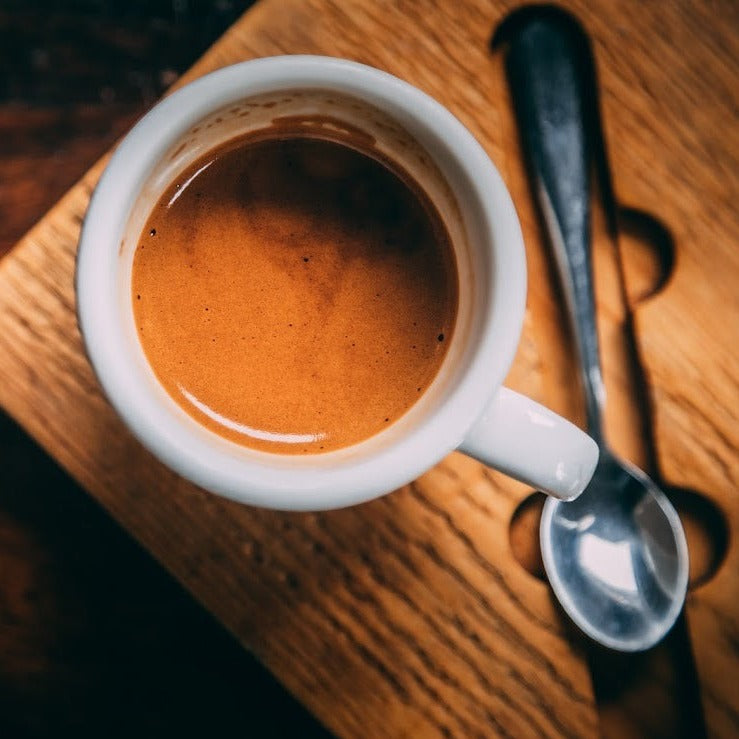The Coffee Lover’s Guide to SOE Single Origin Espresso Varieties
The Coffee Lover’s Guide to SOE Single Origin Espresso Varieties
Blog Article
Recognizing Coffee Beans: the Journey From Coffee to Blended Coffee Beans

The Beginnings of Coffee: An International Perspective
While you could assume of coffee as a modern staple, its beginnings map back centuries, linking with cultures across the world. The tale begins in Ethiopia, where tale states a goat herder named Kaldi found the stimulating impacts of coffee beans after seeing his goats romping energetically after eating them.
As profession paths expanded, coffee made its way to Europe in the 17th century, promptly gaining popularity. It changed from a mystical drink right into a daily ritual, inspiring gatherings and intellectual exchanges. Each culture included its unique spin to coffee prep work, enhancing its history. This international trip highlights how coffee links us, going beyond boundaries and uniting diverse customs via a simple bean.
Cultivation and Harvesting of Espresso Beans
As coffee's journey developed, the focus moved to the farming and harvesting of particular bean selections, particularly those used for coffee. You'll discover that espresso beans usually originate from Arabica or Robusta plants, each offering distinct flavors. The ideal growing conditions include high elevations and abundant, well-drained soil, which boost the beans' high quality.
Throughout the harvest, picking methods differ. Timing is important; you want to harvest when the cherries reach peak perfection for optimum taste.
Once harvested, the beans are planned for handling, which is essential in establishing their final taste. Understanding the growing and collecting procedures offers you understanding into what goes into your favorite espresso, enhancing your admiration for each and every cup.
Handling Approaches: From Cherry to Bean
Currently that you have actually found out about gathering espresso beans, allow's discover how those cherries change right into the coffee beans you enjoy. You'll see how different harvesting methods effect taste, adhered to by the essential steps of fermentation and drying. We'll break down the milling and grading procedure that establishes your coffee's high quality.
Harvesting Techniques Described
When it comes to coffee, recognizing harvesting strategies is vital, since they directly affect the flavor and high quality of the beans you take pleasure in. Careful choosing includes hand-picking only ripe cherries, ensuring you obtain the best quality beans. Ultimately, the option of collecting technique can significantly influence your coffee experience, so it's worth knowing just how those beans made it to your mug.
Fermentation and Drying Out
After harvesting, the following actions in handling coffee beans play a substantial duty in shaping their taste. You'll discover that fermentation is crucial, as it helps damage down the mucilage surrounding the beans, enhancing their preference profile. Depending upon the method, this procedure can last from a few hours to a number of days, with differing results based upon temperature and moisture.
As soon as fermentation is total, drying follows, which is just as essential. You can choose from sun-drying or mechanical drying out methods. Sun-drying permits the beans to absorb tastes from the environment, while mechanical drying assurances regular wetness levels regardless of climate. Correct drying out is important to prevent mold and mildew and protect the beans' quality, eventually influencing your mug of coffee.
Milling and Grading Refine
As fermentation and drying established the stage for flavor development, the milling and grading process warranties that only the most effective coffee beans make it to your mug. This stage includes getting rid of the external layers of the coffee cherry, consisting of the parchment and husk. After milling, the beans are sorted by size and weight, ensuring a consistent high quality. You'll discover that grading helps determine flaws and categorize beans, which impacts flavor and aroma. High-quality beans receive a greater quality, resulting in a richer coffee experience. As soon as graded, the beans are prepared for product packaging and shipping, maintaining their one-of-a-kind attributes. This precise process is important for supplying the remarkable preference you appreciate in every sip of your favorite mixture.
Roasting Techniques: Opening Taste Potential
When you roast coffee beans, the approach you select can substantially affect the flavor profile. Understanding the partnership in between time, temperature level, and toasting methods is key to disclosing the possibility of your brew. Allow's explore just how these components collaborated to produce the excellent cup.
Toasting Methods Described
While you may believe that all coffee toasting techniques yield the exact same outcomes, the reality is that each method exposes distinct flavor possibilities in the beans. Drum roasting makes use of a rotating drum to equally distribute warmth, boosting caramelization and creating a balanced taste. Air roasting, on the various other hand, distributes warm air around the beans, advertising a lighter roast with obvious acidity.

Effect On Flavor Account
Different toasting techniques not just influence the procedure but additionally significantly affect the taste account of the coffee beans. Dark roasts, on the other hand, bring out vibrant, smoky flavors, in some cases concealing the bean's distinct features. Understanding these subtleties assists you appreciate the creativity behind your mug of coffee, boosting your overall experience with every sip.
Time and Temperature Variables
To release the full taste capacity of coffee beans, both time and temperature level throughout the toasting procedure play substantial functions. When roasting, you'll discover that higher temperatures can quickly create flavors, however if you hurry it, you might wind up with burned notes. Conversely, lower temperatures permit a much more progressive taste growth, showcasing the beans' special attributes.

Timing is just as vital; expanding the roast too long can result in a loss of level of acidity and illumination, while as well brief a roast might leave the beans underdeveloped. Locating that sweet spot requires technique and experimentation. By changing these variables, you can disclose the abundant, complicated tastes hidden within each bean, producing a genuinely impressive coffee experience.
The Art of Mixing: Crafting Unique Coffee Profiles

Start by selecting a base coffee that provides a solid structure. Then, select corresponding beans to boost details taste notes. A brilliant Ethiopian bean can bring fruitiness, while a rich Brazilian coffee includes body. Testing is vital-- don't hesitate to adjust ratios till you locate your optimal profile.
As you blend, keep in mind that each combination informs a tale. You're not just making coffee; you're creating an experience. Take your time, preference regularly, and delight in the journey of uncovering your signature mix - Single Origin Espresso.
Developing Techniques: Just How Preparation Influences Taste
Blending coffee opens up a domain name of flavor opportunities, but just how you make that blend can considerably influence your final mug. Single Origin Espresso On the other hand, a pour-over highlights the coffee's clearness and brightness, best for showcasing fragile notes.
Coffee, with its high pressure, produces a concentrated shot that accentuates sweet taste and crema. If you prefer a lighter brew, consider a chilly brew approach; it yields a smooth, much less acidic taste.
Eventually, testing is vital. Readjusting variables like water temperature, grind dimension, and make time can change your coffee's account. So, welcome the art of developing to find the tastes hidden in your coffee blends. The right technique can boost your experience to new heights.
The Future of Coffee: Sustainability and Advancement
As the coffee industry advances, sustainability and advancement are coming to be essential for dealing with ecological obstacles and conference consumer demands. You'll see that more coffee companies are adopting green methods, from sourcing beans ethically to carrying out lasting farming methods. These changes not just help the earth however additionally enhance the top quality of the coffee you take pleasure in.
You may see developments like biodegradable packaging and water-saving developing methods that minimize waste. Advanced innovation, such as blockchain, is additionally becoming prominent, guaranteeing openness in the supply chain, which enables you to trace your coffee back to its origins.
Additionally, purchasing regional neighborhoods and supporting farmers via fair trade efforts cultivates a more sustainable coffee ecological community. As you drink your following mug, keep in mind that your choices can add to a brighter future for coffee. By going with sustainable brand names, you're not just taking pleasure in a drink; you're making a favorable effect on the globe.
Often Asked Questions
What Is the Distinction Between Arabica and Robusta Beans?
Arabica beans are smoother, sweeter, and have a higher acidity, while robusta beans are more powerful, more bitter, and have more caffeine. When making your coffee., you'll discover these differences in flavor and scent.
How Does Elevation Affect Coffee Bean Flavor?
Elevation effects coffee bean taste significantly. Higher altitudes create beans with brighter level of acidity and complicated tastes, while lower elevations typically yield beans that are much heavier and much less nuanced. You'll discover these distinctions in your cup!
What Are the Health And Wellness Benefits of Alcohol Consumption Coffee?
Drinking coffee can increase your energy, improve psychological emphasis, and even boost physical performance. It's abundant in antioxidants, may reduce the risk of specific diseases, and can advertise a much healthier metabolic process when eaten in moderation.
Can Coffee Beans Be Recycled for Brewing?
Yes, you can reuse coffee beans for developing, but the flavor may be weak. If you enjoy exploring, attempt reusing them in different methods, like cool brews or adding to smoothies for an extra kick.
Just how Should I Store Coffee Beans for Freshness?
To maintain your coffee beans fresh, save them in an impermeable container in an amazing, dark area. Stay clear of exposing them to light, dampness, or heat, as these aspects can promptly weaken their flavor and aroma.
Understanding Coffee Beans: the Journey From Espresso to Blended Coffee Beans.
Currently that you have actually found out concerning collecting coffee beans, allow's discover just how those cherries change right into the coffee beans you enjoy.When you roast coffee beans, the approach you pick can significantly affect the flavor profile - Single Origin Espresso.While you might believe that all coffee roasting techniques produce the exact same results, the truth is that each technique reveals unique taste potentials in the beans.Various roasting methods not only influence the process yet likewise considerably impact the taste profile of the coffee beans
Report this page